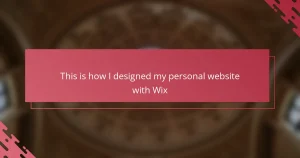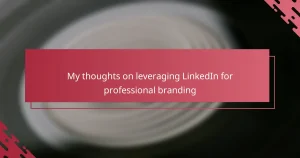Key takeaways
- An illustrator portfolio showcases an artist’s unique style and skills, evolving continuously to reflect creativity.
- ArtStation offers a focused platform with community support that enhances presentation and organization of artwork.
- A strong portfolio emphasizes quality, coherence, and thoughtful curation to effectively communicate the artist’s narrative.
- Regular updates and maintaining high-quality standards are crucial for portfolio relevance and personal growth as an artist.
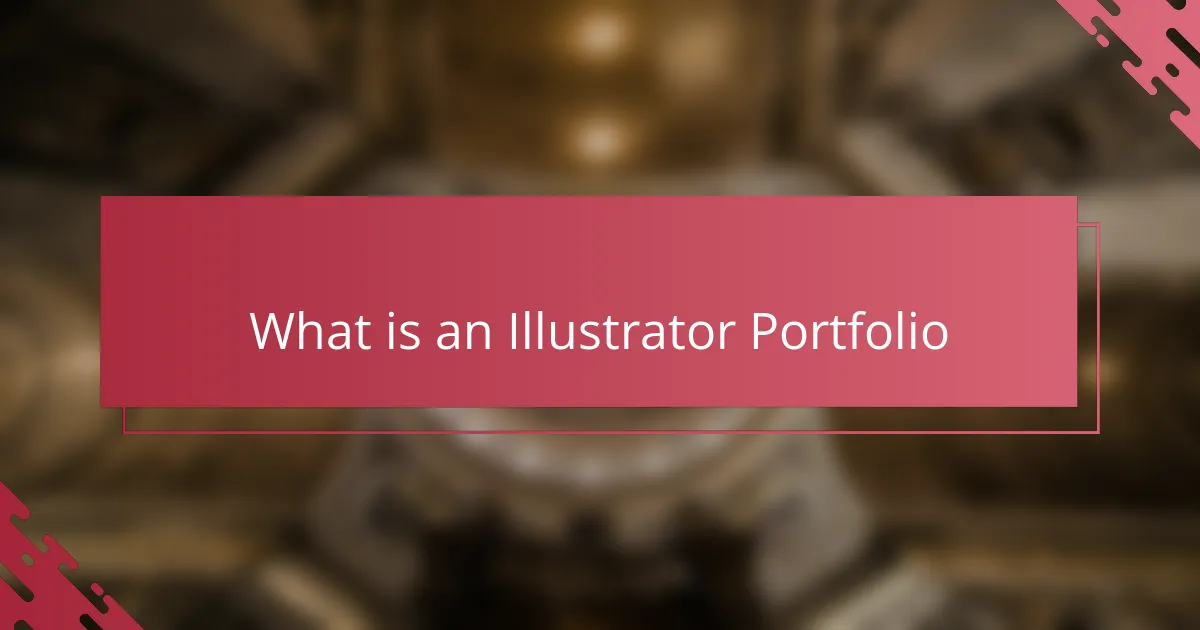
What is an Illustrator Portfolio
An illustrator portfolio is essentially a carefully organized collection of your best artwork, showcasing your unique style and skills. It’s not just a random assemblage; it’s an intentional story you tell through images, reflecting who you are as an artist. I remember feeling nervous the first time I put mine together—wondering if it truly represented my abilities or personality.
What struck me is that a good portfolio answers a silent question: “Why should someone choose my art over thousands of others?” This question drives how you select and arrange your pieces, emphasizing quality and coherence. Have you ever paused to think about what your art says about you without words?
In my experience, an illustrator portfolio evolves just like your own creativity—it’s never truly finished. Updating it regularly keeps things fresh, and each change makes me feel more confident sharing my work with potential clients or collaborators. Isn’t that feeling worth the effort?
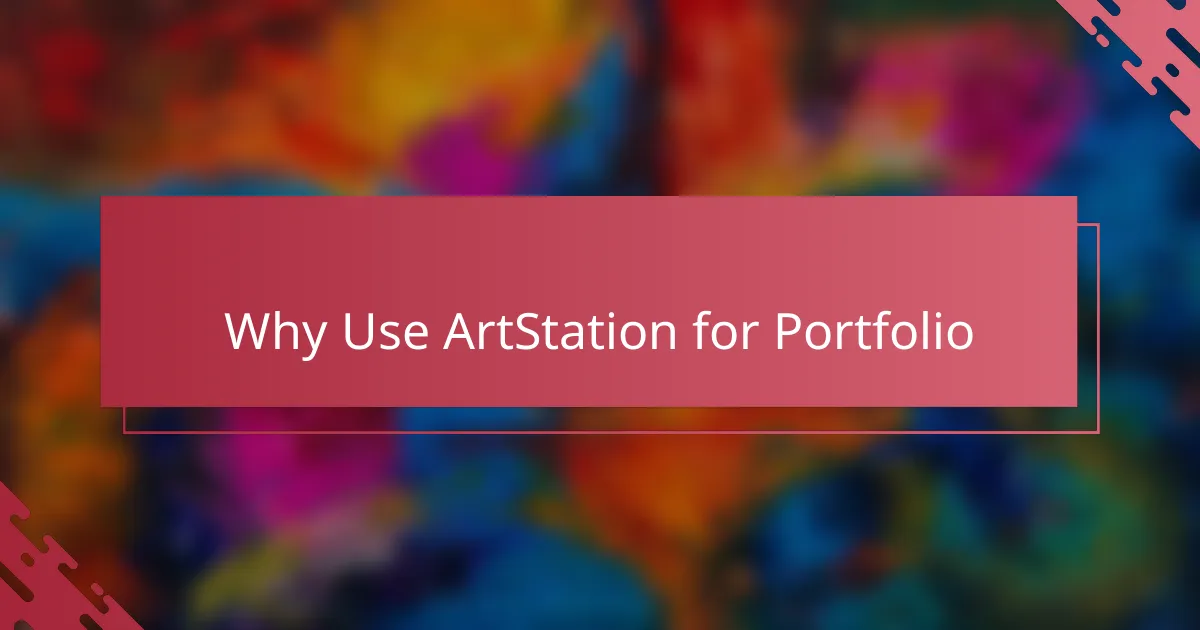
Why Use ArtStation for Portfolio
ArtStation quickly became my go-to platform because it’s tailored specifically for artists like us. The way it highlights visuals without distractions made me realize how crucial presentation is—after all, our art deserves the spotlight. Have you noticed how some platforms bury your work under endless menus? ArtStation feels different.
What really sold me was the community aspect. Browsing through fellow illustrators’ portfolios there sparked both inspiration and motivation. I found myself wanting to push harder, just to keep up with the talent surrounding me. Doesn’t being part of an energetic, creative hub make your own work feel more alive?
Plus, the ease of updating my collection on ArtStation has been a game-changer. There’s something satisfying about quickly uploading new pieces or rearranging them on the fly. When I see my portfolio evolve effortlessly, it reminds me that growth as an artist is ongoing, not a one-time event. Have you experienced that simple joy of watching your work grow in real time?
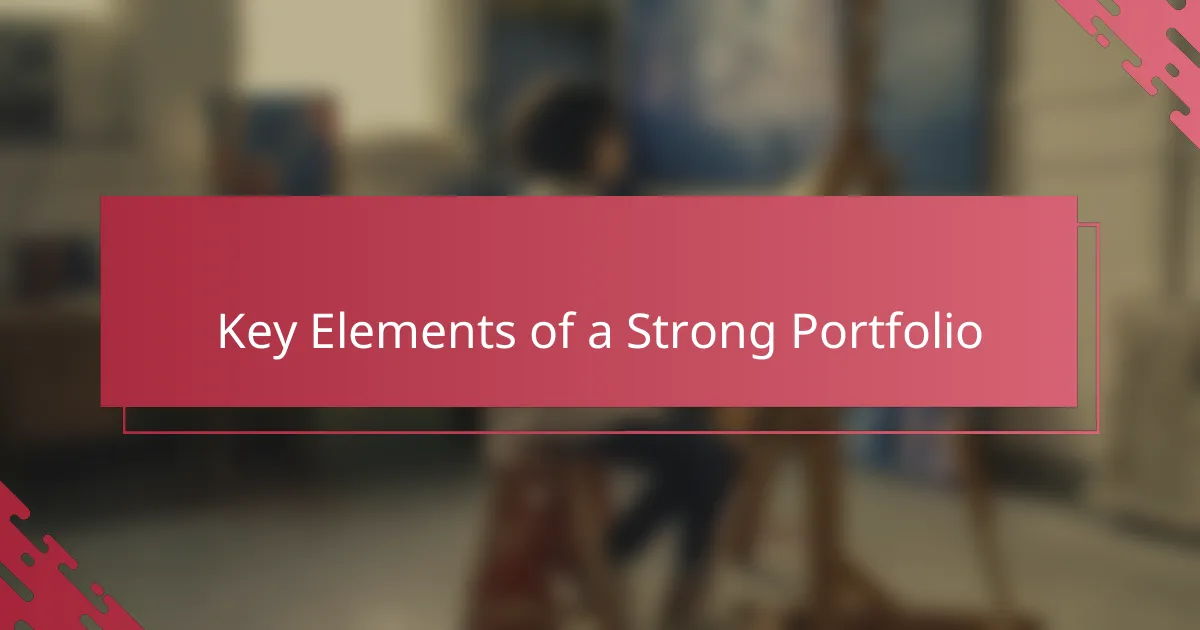
Key Elements of a Strong Portfolio
A strong portfolio, to me, always starts with a clear focus. I learned early on that showcasing too many styles or random pieces only confuses viewers. Instead, selecting works that highlight your signature style and technical strengths creates a compelling narrative about who you are as an artist. Have you ever felt unsure which pieces truly represent your best work? Narrowing down that selection is key to making a lasting impression.
Another element that I’ve found crucial is variety balanced with coherence. Including different subjects or techniques can demonstrate versatility, but they need to feel connected. When I arranged my portfolio on ArtStation, I paid close attention to how each piece flowed into the next, almost like chapters in a story. This thoughtful curation helps viewers engage deeply rather than just skim through images.
Lastly, presentation and polish matter more than I initially realized. Clean layouts, high-quality images, and concise descriptions add professional weight to your portfolio. I remember the moment I upgraded my thumbnails and added short context notes—it instantly made my work feel more approachable and credible. Isn’t it interesting how small details can change how others perceive your art so dramatically?
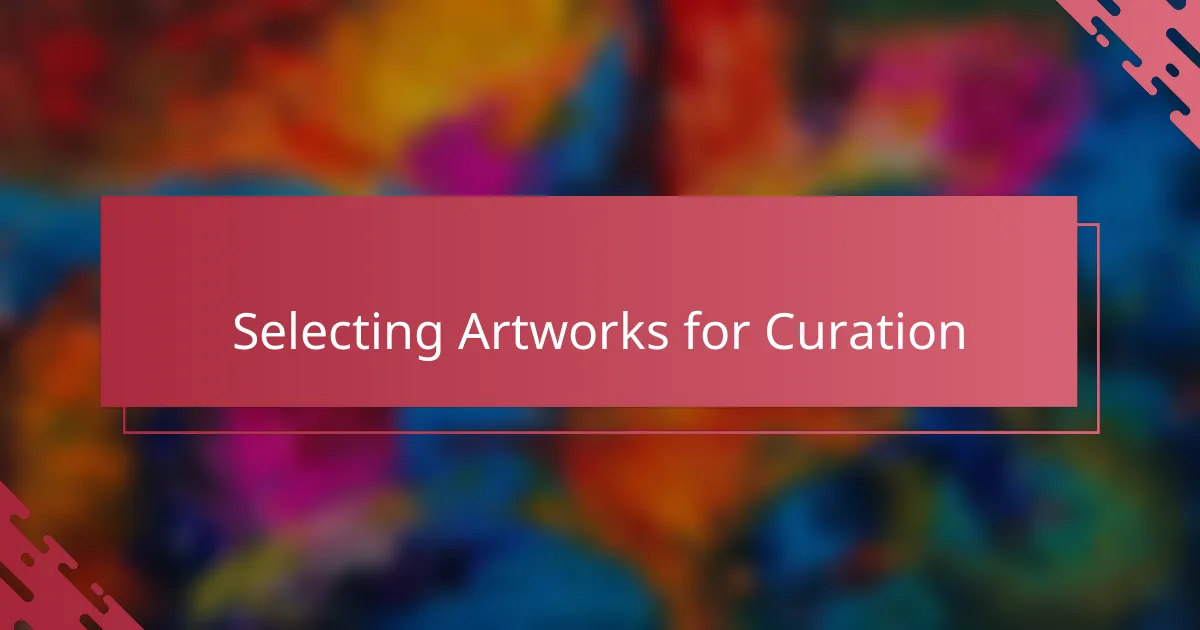
Selecting Artworks for Curation
Choosing which artworks to include was one of the toughest parts for me. I found myself constantly asking, “Does this piece really showcase what I want to say as an artist?” It’s tempting to add everything you love, but I learned that less truly is more when each selection has a purpose.
I focused on pieces that not only displayed my technical skills but also resonated emotionally with me. When I look at those artworks, I feel a connection—a story or a feeling that I want to share with others. Don’t you think portfolios are more powerful when they reflect genuine passion rather than just skill?
Sometimes, stepping back helped me see the bigger picture. I zoomed out and considered how each artwork complemented the others, making sure nothing felt out of place or redundant. Crafting that harmony was like arranging puzzle pieces until the overall image felt just right—have you ever experienced that satisfying click when everything falls into place?
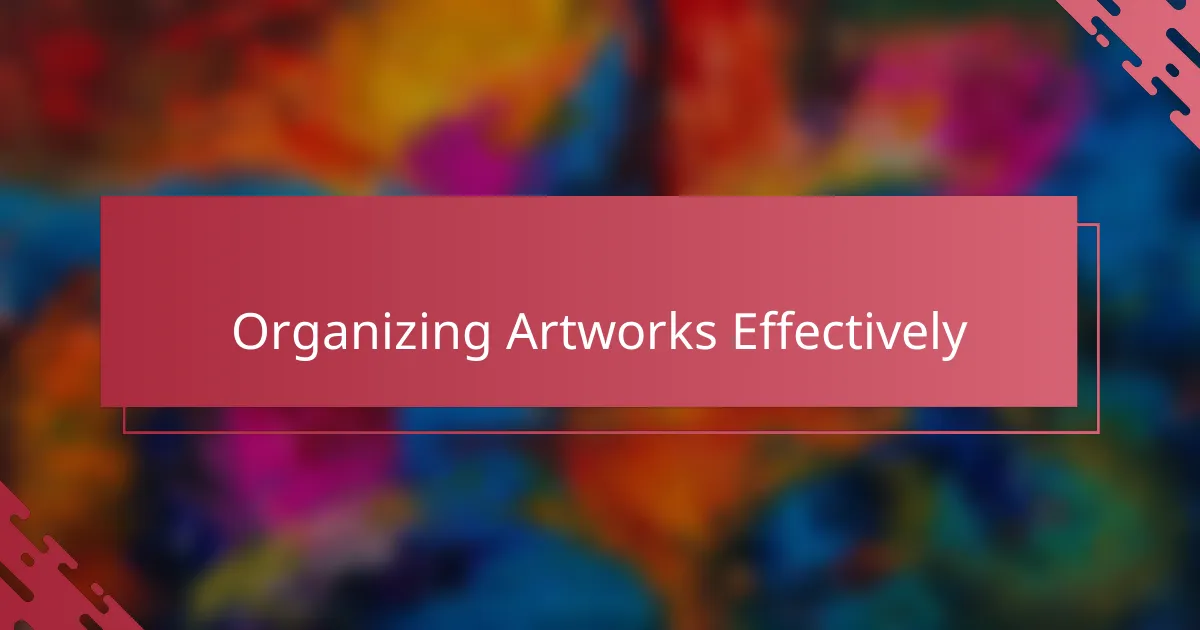
Organizing Artworks Effectively
Organizing artworks effectively meant more than just slapping images onto a page for me. I realized that grouping similar themes or styles helped create a flow that felt natural—like guiding someone through my artistic journey without words. Have you ever noticed how a disorganized gallery leaves you confused, while a well-arranged one invites you in?
I also learned the importance of balancing quantity with clarity. At first, I tried to include everything I was proud of, but it quickly became overwhelming. Narrowing down to a focused selection made my work breathe and speak louder, which made the whole portfolio feel more intentional and impactful.
Another trick I picked up was using folders and tags on ArtStation to keep everything neat behind the scenes. This little organization hack saved me hours when updating or rearranging pieces. It’s surprising how a simple system can reduce stress and make you excited to keep refining your collection—don’t you love that feeling of control over your creative space?

Personal Tips for ArtStation Curation
One thing I’ve found invaluable when curating on ArtStation is to stay true to your own voice rather than chasing trends. Early on, I tried including flashy pieces just because they were popular, but they didn’t feel authentic to me. Have you ever felt that disconnect between what you want to showcase and what you think others expect? Keeping my portfolio genuine made sharing my work much more fulfilling.
I also make a habit of reviewing my portfolio with fresh eyes every few months. Sometimes I’ll spot artworks that no longer resonate or layouts that feel clunky. It’s almost like editing a story—cutting what doesn’t add value tightens the narrative. Don’t underestimate the power of stepping back; that pause can reveal what truly makes your collection shine.
Another tip that’s been a game-changer is using ArtStation’s features to highlight recent work or projects I’m especially proud of. By pinning select pieces or creating custom collections, I guide visitors to what matters most right now. That small bit of control over first impressions really boosted how confident I felt about my portfolio’s impact. Have you tried this kind of spotlighting in your curation process?
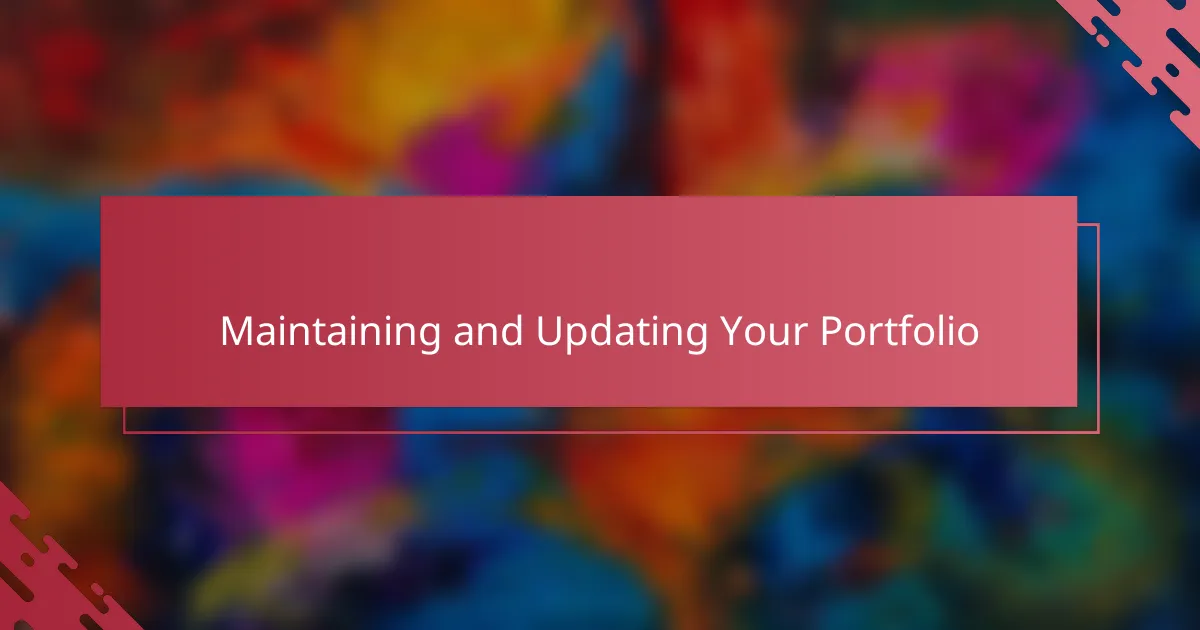
Maintaining and Updating Your Portfolio
Keeping your portfolio up-to-date became a natural part of my creative routine. Every few months, I carve out time to add new work and remove pieces that no longer reflect my current style or skill level. This ongoing process feels less like a chore and more like a personal check-in—a way to see how far I’ve grown and what stories I want to tell next.
I’ve noticed that maintaining consistency in quality really helps. When I let outdated or weaker pieces linger, it drags the whole collection down. So, I’ve gotten comfortable with being a bit ruthless—if a piece doesn’t contribute positively, it’s okay to let it go. Have you ever struggled to delete something you loved once upon a time? It’s tough, but freeing too.
One practical habit I adopted is setting reminders to review my ArtStation portfolio regularly. This way, updates happen gradually, not in a stressful rush. Uploading new projects and rearranging layouts sometimes sparks fresh ideas, making the portfolio feel alive rather than static. Don’t you find that small, steady updates keep motivation high and your portfolio in sync with your creative journey?
